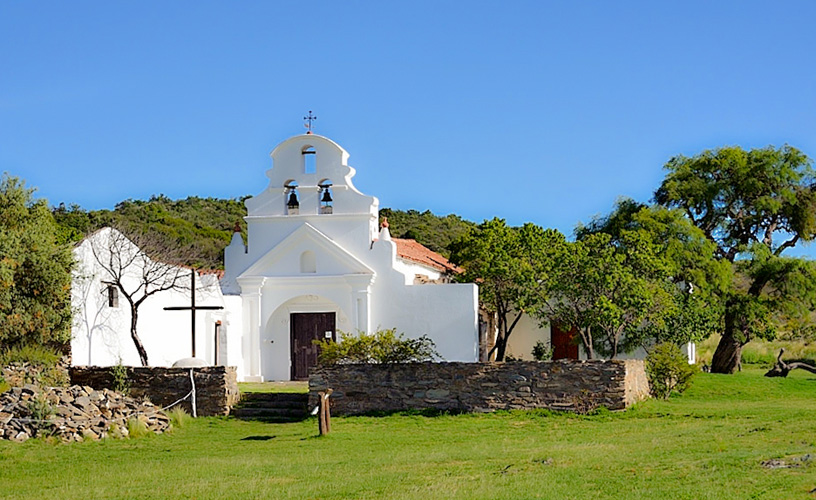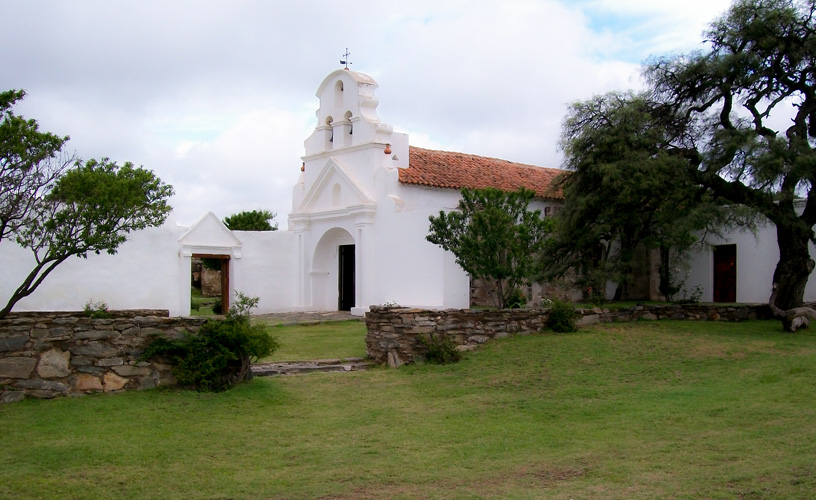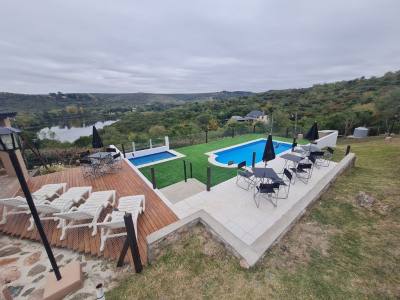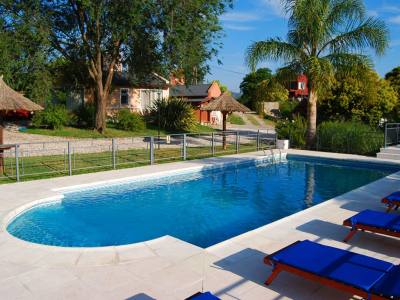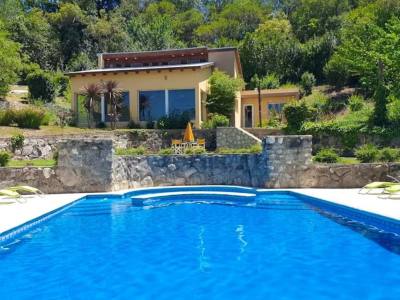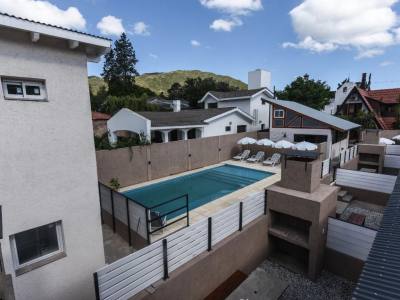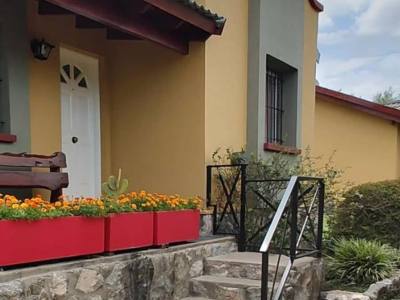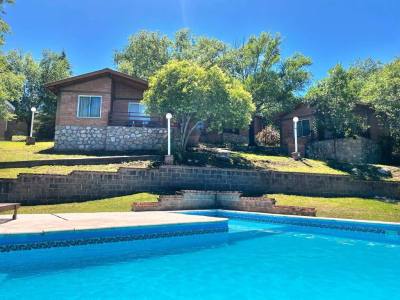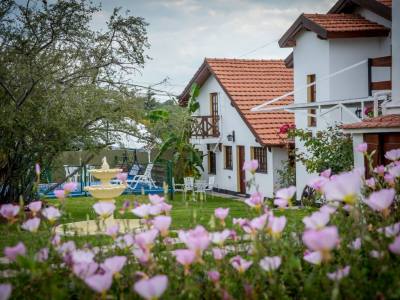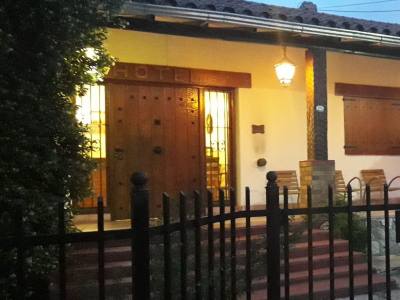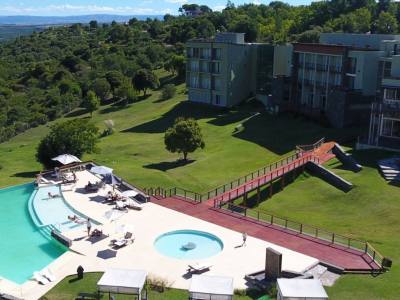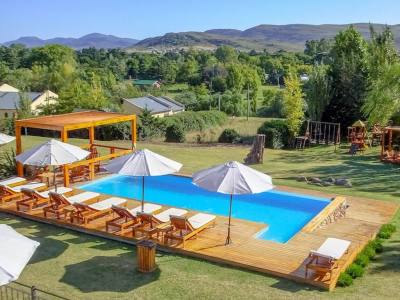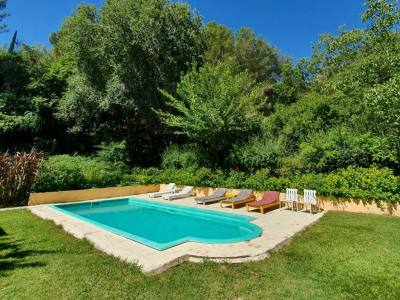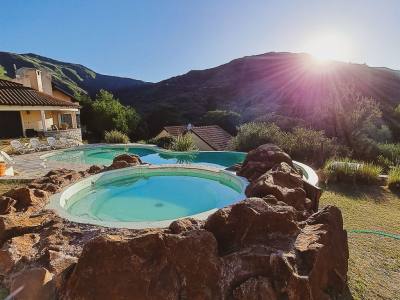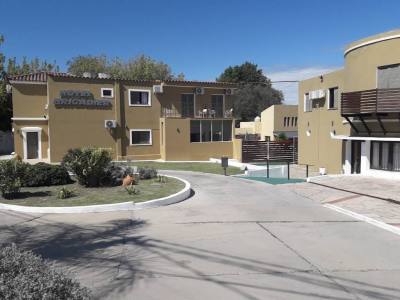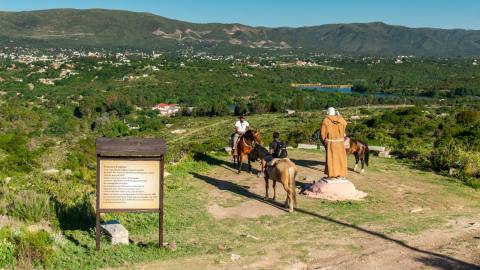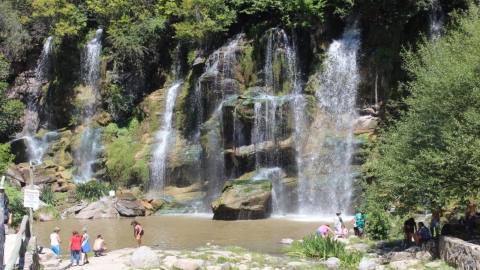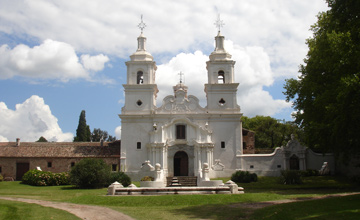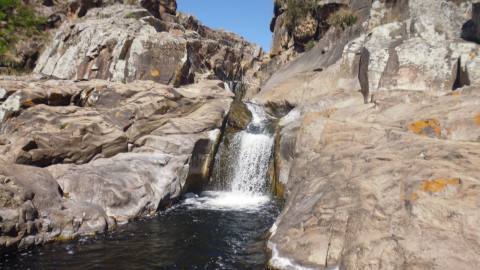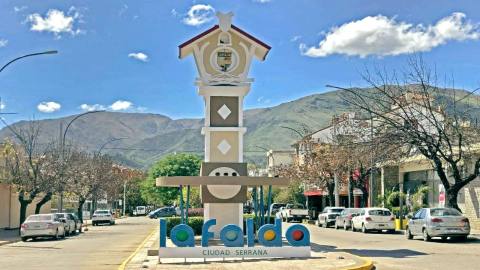The engravings on the door of the priest in charge of this estancia reads: "1683". That is the year when Estancia de la Candelaria was finally consolidated in Jesuit hands. It came to be the best sample of a livestock venue in the mountain range -mainly raising mules- dealing assents from and to Upper Peru. The strong will of the missionaries had to face the harsh geographical features and weather as well as the Indian raids in the rural spots located 220 kilometers to the northwest of the City of Córdoba. This environment marked the architectural differences with other Jesuit estancias, as its unusual situation of fort and residence with a sanctuary is unique in the province. Its surrounding walls and only access gate give evidence of the resistance of the natives against colonization in a moor where rocks prevail.
Visit to Estancia Jesuita La Candelaria
The church, with its rocky walls and austere lines, stands out for its Baroque bell gable, which houses three bells. It remains almost untouched. It has been completely painted white with lime, except for the altar, where pastel shades and simple ornaments are predominant. There are also some images and a wood carved image of the Virgin of Candelaria. A small chamber with a hole next to the entrance was used to watch for Indian raids, even during mass.
Pablo Etchevers
Gentileza Cba.gov.ar
